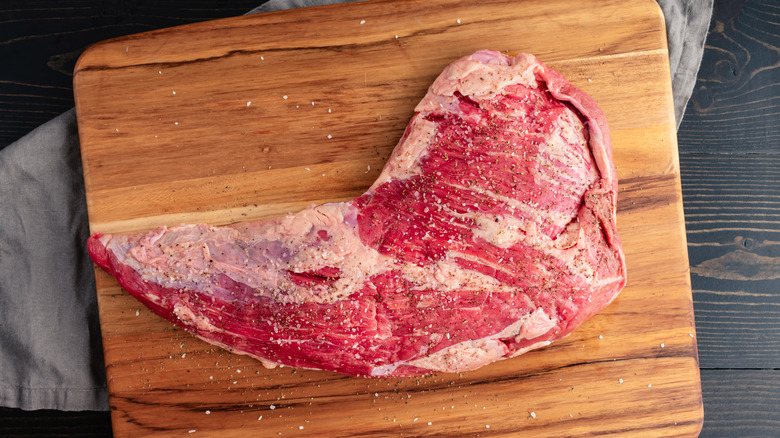Since it’s not the most popular cut in the U.S., many people are left asking what exactly is the picanha steak cut? This beefy meat with a beautiful fat cup comes from the rump of the cow and, while an easy find at any Brazilian steakhouse, it isn’t always available at grocery stores. So, we turned to Dennis Littley, Chef and Recipe Expert at Ask Chef Dennis, to find the best substitute.
“Often, picanha can be tough to find at typical U.S. grocery stores,” Littley says. “It’s often mislabeled or cut into top sirloin steaks before it ever hits the shelf. That’s where tri-tip comes in as a decent stand-in.” The biggest difference between picanha and tri-tip is where the cuts come from. Tri-tip comes from the very bottom of the sirloin, so it’s a bit similar to picanha but often more affordable.
“It’s not identical, but it’s got a similar grain and good beefy flavor,” Littley continues. “Tri-tip doesn’t have that fat cap, so it cooks a little leaner, but you can still get great results with a reverse sear or [a] hot grill finish.” As a whole, you can substitute picanha with tri-tip without needing to change your recipe. Provided you keep an eye on its internal temperature, the same marinades, rubs, and cooking methods often yield almost identical results. That being said, how you slice your tri-tip is a huge factor in how similar it is to picanha.
How to slice tri-tip as a substitute for picanha
While both picanha and tri-tip come from the back half of the cow, their grains are quite different. “With picanha, especially in churrasco-style cooking, you want to slice against the grain into thick steaks before grilling, or cook it whole and carve after resting,” says Dennis Littley.
Slicing meat against the grain means you want to identify the direction its muscle fibers run in and slice perpendicular to them. This shortens the fibers, making the meat more tender without needing marinades or special cooking techniques. While this muscle rarely gets much use from a cow, meaning that it’s naturally tender, many chefs enhance its texture with this technique. On picanha, this is a simple trick as the muscle fibers are straight.
On the other hand, tri-tip is a bit trickier. “Tri-tip has a grain that changes direction, so you’ve got to pay attention to how it’s running and slice accordingly to keep it tender,” Littley says. Inadequate attention to its muscle fibers may be a big reason why tri-tip is one of the most underrated cuts of steak, as some people find its texture to be too firm. When you’re ready to carve, start at the end where the grain runs relatively straight from left to right and slice perpendicular to the fibers, stopping about halfway through. Once the grain starts to run vertically, turn the meat 90 degrees and continue slicing, creating plenty of tender medallions for your dinner.






